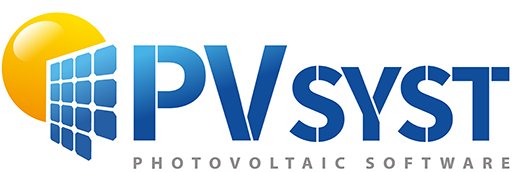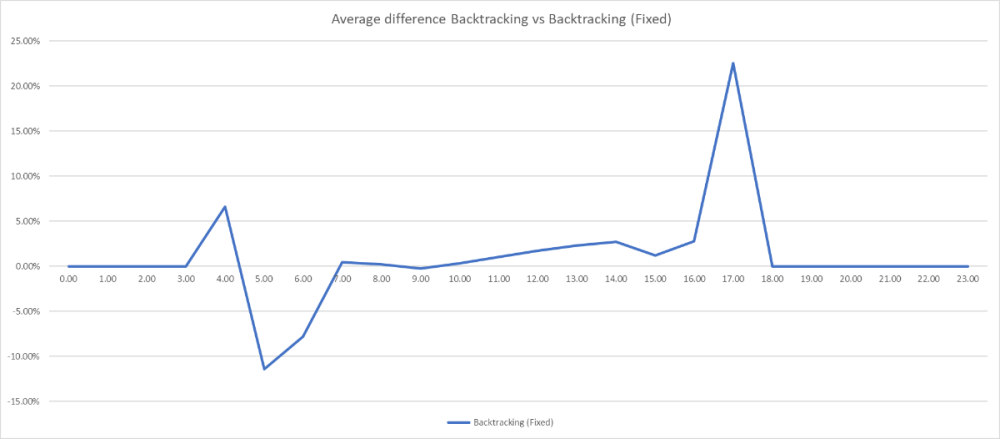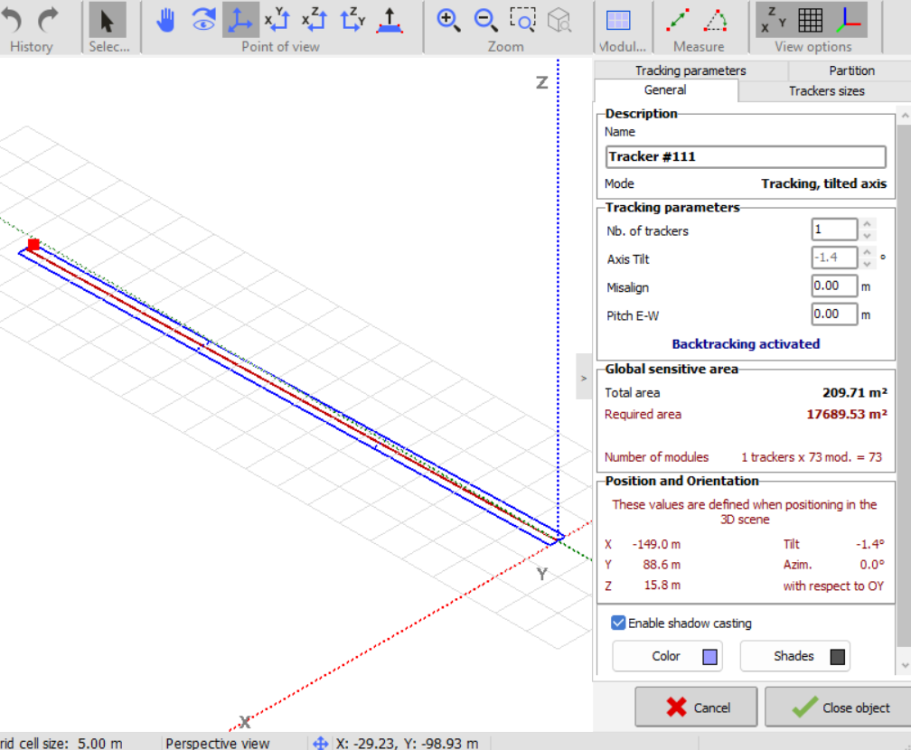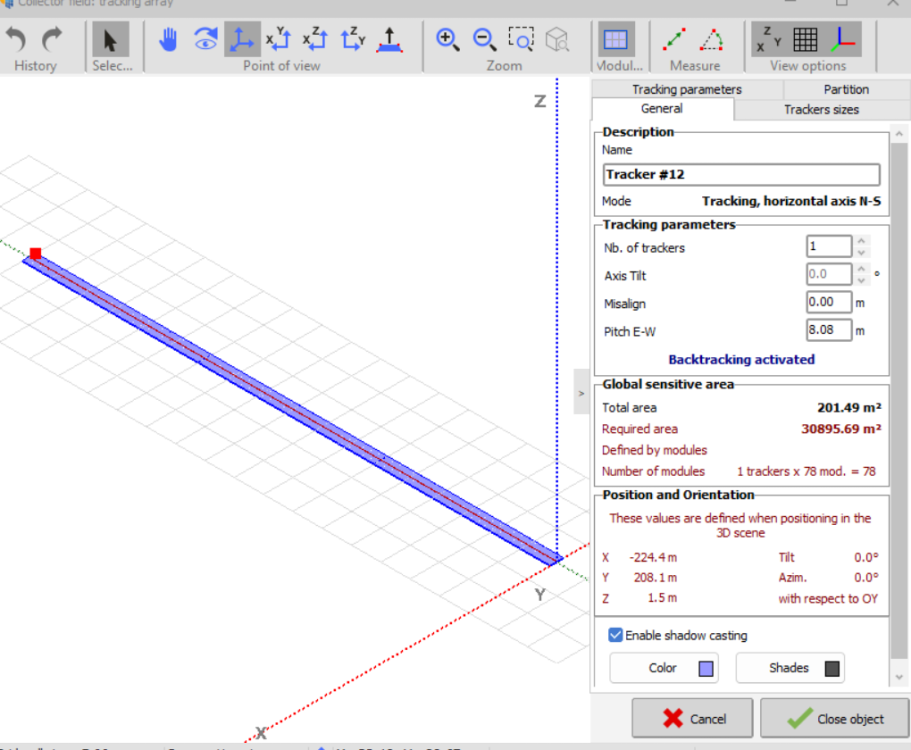Search the Community
Showing results for tags 'backtracking'.
-
Hi to all forum members I am looking to simulate backtracking behavior as a summation of fixed structure items. What I mean; Perform a simulation with bactracking enabled to know the angle at each tracker time. Then perform a batch simulation with a sweep of all the positions(angles) that the tracker can be in. Then process the information in a separate document, select the E_grid if the angle of each hour that comes from backtracking match with the respective angle in the batch simulation, and replicate this whole year The problem I have is that when comparing the first and the last hours of the day, they give very different results to those obtained with backtracking, the rest of the numbers are kept in similar parameters. Any idea why for the same time and the same angle, is the E_grid for backtracking different than as a fixed structure? Any help is appreciated
-
PVcase imported trackers do not have pitch defined when going in the modify object. Does it impact backtracking? I have heard from a few industry people that it does not do the backtracking as it does not have the pitch defined (or not an array of the trackers) and all the trackers are ungrouped and are not an array of trackers Also if I ungroup an array of trackers which was created in PVsyst near shading, does this affect the backtracking? See the below snip for reference Pvcase export An array of trackers was created in Pvsyst and then ungrouped
- 1 reply
-
- backtraking
- backtracking
-
(and 3 more)
Tagged with:
-
I would like to know if there is a reason for not obtaining "electrical loss acc. to string" when using a Horizontal Tracking System and simulating as "According to Module Strings", regardless of the "fraction for electrical effect". With fixed structures, there is "electrical loss acc. to string" when simulating as "According to Module Strings", since shadows generate mismatch of electrical response of the modules in series and strings in parallel. I was expecting the same for Horizontal Tracking Systems (despite backtracking) since once there are shadows ("near shadings: irradiance loss" is not 0), the mismatch of electrical response of the modules would cause a loss.
- 8 replies
-
- backtracking
- near shadings
- (and 3 more)
-
Hello everyone, I've been recently introduced to the concept of backtracking. Based on what I understood, the trackers are tilted in reverse to solar tracking to avoid mutual shadings between PV rows when the solar elevation is low. In that case, I would expect that the near shadings losses would be 0 (assuming that there aren't any other surrounding obstacles in the scene such as trees). I simulated a project with bifacial PV modules in a N/S horizontal single axis tracker configuration. The elevation of each tracker row does slightly differ as indicated by the topography. However, currently, we cannot simulate such a scenario, thus we assume that all trackers are of the same elevation, orientation, and size. Considering this brief explanation, what could be the issue causing the near shadings looses to be non-zero when using backtracking? If interested, I can share additional details, Any feedback is welcome, Regards




